QUY NHON TRAVEL GUIDE 2024 - All you need to know
Reinvigorate your spirit with a splash of Vitamin "Sea" on a journey to the stunning and dynamic city of Quy Nhon. Blessed with expansive sandy beaches, crystal blue waters, and timeless architectural marvels, this is an amazing locale for fervent wanderlusts. Let the ultimate Quy Nhon travel guide by Vietravel - Asia's Leading Tour Operator guide you in embracing the unique allure of the enchanting coastal city nestled Vietnam’s central region. So, what's holding you back? Start mapping out your escapade to this charming destination right away! Learn more about the Vietnam travel guide.I. The best time to visit Quy Nhon:For optimal enjoyment of the stunning landscapes of Quy Nhon, it is recommended to schedule your visit during the dry season, spanning from January to August. Average Monthly Rainfall at Quy Nhon. Photo by weatherspark.com This favored time frame promises pleasantly dry weather and mild temperatures, perfect for sightseeing and enjoying outdoor pursuits. Plus, coming during this period helps you steer clear of any storm, ensuring your travel plans remain uninterrupted. Explore tour packages to Quy Nhon here.Moreover, summer presents an array of traditional celebrations such as whale worship, martial arts, and boat racing festivals, among others. Nevertheless, keep in mind that beaches tend to be bustling during the summer vacation period, from May to August. For a more serene and enjoyable experience without the crowds, consider planning your trip between March and May when tourist numbers are lower.II. The best place to visit in Quy Nhon1. Ky Co Beach Firstly, looking for the ultimate Quy Nhon trip? Look no further than Ky Co Beach and Eo Gio Beach, a dynamic duo that's a must-see for any traveler in the area. Ky Co, the beach has one side giving you the sweet sea scenery and on the other, it's cozied up to a badass mountain range. The waters around Ky Co? They're like the clearest cocktail of emerald shades, catching the sun's rays, showing off coral reefs, and giving you a peek into the marine party happening below. Take a dip or stroll on the long, white sandy curves forming a perfect crescent. And for those who crave some aquatic adventures, snorkeling, and jet skiing are like the coolest ocean parties in town.Ky Co beach is super beautiful with bow-shaped sand like the moon. Shuttle Stock's photo2. Eo Gio BeachBut wait, there's more! Right around the corner from Ky Co Beach is Eo Gio, a jaw-dropping spectacle with these massive stony formations putting on a show along the ocean. The whole shebang of sky, sea, and mountains all in one epic frame. With a road cozying up to the mountainside, this spot's like the hottest check-in location, especially when the sun's doing its magical thing. Let’s soak in the wind, waves, and endless ocean views through the telescopes lined up along the coast. Wanna feel the vibe on the rocky shores? Go for it, but tread carefully; rocks can be a bit slippery and sharp. And of course, no need to hold back—snap some laid-back pics with your squad or dears at this drop-dead gorgeous natural attraction.Peep the tour to Ky Co Beach - Eo Gio Beach for the hookups at the best prices.Eo Gio check-in corner is full of romance. Photo by Shuttle Stock3. Hon Kho IslandSecondly, nestled in the heart of Nhon Hai's fishing village, Hon Kho is a real treasure for beach enthusiasts. The picturesque paradise is encircled by pristine, crystal-clear waters. As you step onto the island, you'll be immediately drawn to its unspoiled tranquility, inviting you to close your eyes and surrender to the rhythmic melody of waves lapping against the sand. Whether you're exploring the mesmerizing coral reefs beneath the transparent water or riding on a vibrant banana boat, Hon Kho promises a thrill. Scene of local people collecting seaweed at Hon Kho.During the months of May and July, Hon Kho undergoes a magical transformation, maintaining its deep blue charisma but now adorned with the graceful golden tones of wonderful seaweed bushes. This unique experience is an absolute game-changer.And that's not all – relish the freshest feast right on makeshift rafts anchored in the waters around Hon Kho. The sensation of feasting on seafood while gazing out at the sea is like holding summer itself in the palm of your hands.Grab the chance to embark on the Hon Kho day trip at unbeatable prices4. Cu Lao Xanh IslandThirdly, don't forget to add Cu Lao Xanh to your travel itinerary when visiting Quy Nhon. Its charm is like nature's masterpiece, painted with the blues of the sea and the sky against the lush green of the foliage.The breathtaking Thao Nguyen Rock Field in Quy NhonIn this shining haven, the Thao Nguyen rock field emerges like a silent giant, solemnly facing the sea. You can trek along the rocky shores with various shapes and sizes, and check in at bewitching natural corners. The highlight of the place is the stunning 360-degree panoramic view, creating a chill vibe as you weave and navigate coastal trails.Cu Lao Xanh is extremely beautiful from above. Photo by Shuttle Stock.Besides, a must-visit spot for capturing the entire specular of Cu Lao Xanh is the lighthouse. To reach this bewitching tower, a 10-minute walk through winding slopes awaits. Once there, a majestic spectacle of breathtaking landscapes unfolds before your eyes. Just raise that camera and strike a cool pose for a post-worthy shot!5. Ghenh Rang - Tien SaNext, in addition to the allure of Quy Nhon's must-visit locations above, Ghenh Rang Tien Sa is also an essential attraction. Located approximately 3 km from the center of Quy Nhon, this place boasts its own unique appeal.The wild beauty of Ghenh Rang Tien Sa beckons adventurers.As you explore this mesmerizing wonder, one destination that must not be overlooked is the tomb of the beloved poet Han Mac Tu. Walking along the winding paths, shaded by towering trees and lush greenery, the majesty of Han Mac Tu's final resting place slowly reveals itself. The tranquil atmosphere evokes a sense of serenity and reverence, transporting you to a different period and space. In the hallowed ground, one can discover the legacy of Han Mac Tu and immerse themselves in his timeless poetry that has withstood the test of time.Egg Stone Beach with its mysterious charmBut the adventure to hidden treasures of the land does not end there. The Ghenh Rang - Tien Sa area boasts even more stunning attractions, such as Egg Stone Beach and Tien Sa Beach. As you stroll along the coastline, you can't help but feel the powerful forces of nature pulsating beneath your feet, a reminder of Mother Earth's immense strength and charm.6. Hon Seo IslandThen, set your sights on Hon Seo, a hidden gem within the expansive landscape of Binh Dinh province, boasting an ethereal beauty untouched by the trappings of tourism. The crystalline waters encircling the island shimmer with an enchanting emerald hue, illuminated by the sun's gentle rays. Take the plunge into its inviting coolness or delve beneath the surface to marvel at the magnificent coral reefs and diverse marine ecosystems. For those craving a more laid-back experience, fishing and camping on the Hon Seo offer the ultimate getaway. Gather around a crackling fire, grilling freshly caught fish, and swapping tales with fellow explorers as you witness the breathtaking sunsets painting the sky. Just remember to pack your gear and leave the island pristine, carrying away all trash upon your departure. 7. Banh It TowersFollowing that, enter a time-honored journey to the Banh It Tower, which emerges from the earth like a glistening gemstone, its allure irresistible to those who seek the mysteries it holds. Encased within its ancient stone facade lies a veritable treasure chest of Cham culture, a timeless homage to the indomitable spirit of its creators. Amidst the verdant landscape, this striking construction stands as a solemn sentinel, its towering presence a testament to the resilience of bygone generations. Also, among the revered relics of Binh Dinh, its intricate carvings serve as silent storytellers of ages past. Even as modernity encroaches, the tower's majestic silhouette remains historic evidence of the exquisite craftsmanship of yesteryears, captivating all who dare to dive into its sacred embrace. 8. Linh Phong PagodaPerched atop a lush, verdant hill surrounded by the vibrant foliage of Binh Dinh, lies the majestic Linh Phong Pagoda. The expedition to this holy site is not for the faint-hearted, as it requires a challenging hike up 600 stairs that seem to ascend endlessly toward the heavens. However, upon reaching the top, Yet, the reward for this strenuous climb is nothing short of spectacular - a commanding view of Buddha Shakyamuni statue, standing tall and proud as the tallest statue in all of Southeast Asia. Intricate wooden details of its architecture begin to reveal themselves, a testament to skilled craftsmanship that has stood the test of time. The smooth and polished surface of the wood gleams in the sunlight, lending a radiant golden hue to the already awe-inspiring structure. One can't help but feel a sense of serenity and reverence in this sacred place in nature's glorious enchantment. The babbling of a nearby brook and the gentle rustle of leaves add to the peaceful ambiance, making it a perfect attraction for meditation and reflection. 9. Twin Cham TowersMeanwhile, nestled in the dynamic center of the city, the Twin Towers rise tall and magnificent, historic evidence of the enduring spirit of the Cham people. Their impressive architectural design stands out amidst clusters of other towering structures, which are deeply rooted in the ancient Champa culture. Every inch of their surface is adorned with intricate carvings, showcasing an unparalleled level of skill and craftsmanship. The gems seem to reach endlessly into the sky as if yearning to touch the heavens themselves. Bathed in sunlight, their walls gleam with a golden radiance, casting an aura of ethereal beauty. But behind their splendor lies a turbulent history, one that has been weathered by the timeless symbols of strength and resilience. Though time may have faded some of its glory, the towers' spiritual essence still radiating a deep cultural and historical significance that transcends generations. Standing in their presence, one can't help but feel overwhelmed by a profound perception of awe and reverence for the lasting legacy of the Cham inhabitants. 10. Lang Song Minor SeminaryFinally, uncover the enigmatic secrets of Lang Song Minor Seminary, where history and tranquility converge. As you set foot upon its sacred grounds, a sense of serenity washes over you with a luxurious stillness. The pathways are adorned with a lush canopy of vital greenery, inviting you to wander deeper into this sanctuary of peace. Immerse yourself in the intricate genesis and evolution of the Vietnamese script, tracing its lineage through the many pages of time. Every corner exudes an unbreakable harmony, paying homage to the elegance of French-inspired architecture that graces this legendary place. Each facet of its building boasts a dazzling spectrum of colors, intricately carved contours, and ornate motifs, standing as living proof of the enduring glamor of centuries past. However, the architecture merely scratches the surface of what our guide strives to impart to you. It's when you delve into the centuries-old historical records of the Vietnamese people that the echoes of history truly resonate. The further you delve, the more captivated you become; the more you uncover, the more profoundly you grasp the timeless essence of this millennia-old traditional culture of the legendary country. Check the prices for a day trip to Lang Song Minor Seminary.III. How to travel to Quy NhonIf you're itching to explore this incredible seaside getaway, sit back and let our Quy Nhon travel guide equip you with a wealth of fantastic tips and transportation hacks to ensure you arrive in town smoothly and with a sense of complete relaxation.1. By air: First, are you ready for a wander of wonder to Quy Nhon through the boundless skies? From the ancient streets of Hanoi, a mere blink of an eye - just over 1 hour and 50 minutes - separates you from this mesmerizing destination. And for those setting sail from the metropolis of Ho Chi Minh City, rejoice, and can expect an even swifter journey, shaving off approximately 20 minutes of your flight duration.Refer to the ticket prices for flights to Quy Nhon with Vietravel Airlines.2. By Train:Next up, if you're all about that thrill and discovery vibe, hitting up Quy Nhon via the dope railway is where it's at. Roll through diverse landscapes depending on the spot you start, each stretch offering up its own killer views. When the train pulls into Dieu Tri Station, that's the real adventure kicks off. Let’s hit up the busy city streets and dive deep into its soul. Let’s embrace the rush of spontaneity and the satisfaction of tackling unexpected challenges because that's what real exploration entails. Book train tickets here. 3. By public buses/ Vietravel’s private car/ coach:Lastly, discover the enchanting rhythm of this picturesque seaside by a bus ride, the last travel option recommended by our guide. Unlike the swift ascent of flying, traversing by bus gifts you the leisure to soak in the boundless splendor of Vietnam from the panoramic window. Every mile unfolds a new vista, painting a tapestry of landscapes that dance to the beat of your journey. Immerse yourself in the freedom to sculpt an amazing trip, shaping each stop to match the desires of your wandering soul. Now, Quy Nhon has 13 bus routes running all over town. Just hop on, tell the driver where you're headed, and they'll drop you off at the closest stop. But if you're not up on your Vietnamese, chatting with the driver might be a bit tricky. While you're out there contemplating your travel game, let me drop some knowledge on you: Vietravel's got your back with some next-level private transportation. We're talking about cruising in style and comfort, no stress, no fuss! All you gotta do is hit up our website, book your ride, and bam! You're rolling in the lap of luxury with our modern, top-of-the-line vehicles, complete with dedicated drivers who'll ensure your journey is smooth sailing all the way. Get hyped, 'cause every moment on this ride is a chance for epic discoveries! Vietravel's contemporary lineup of vehicles stands poised to cater to your needs at all times.Refer to our tour packages to Quy Nhon here. IV. How to get around Quy NhonGet ready to discover through Quy Nhon like a local pro! In this section of Vietravel's Quy Nhon travel guide, we'll show you the ropes on navigating this coastal gem with style and ease. Whether you're craving a beachside expedition or eager to explore hidden gems off the beaten path, we've got the insider tips to make your expedition perfect. So buckle up and let's dive into the adventure of a lifetime! 1. Motorbike – An exhilarating and captivating escapadeAnswer the call of adventure as you dive into a motorbike expedition across Quy Nhon, kickstarting your excursion with an electrifying surge of adrenaline. It's a great time to grab a motobike along the coastline and bathe in the radiant embrace of golden sunlight. But amidst the thrill, prioritize safety by obtaining a valid license and strapping on a helmet. While this escapade typically appeals more to local travelers, international explorers need not feel left out. Just link up with your guide, who'll curate a fully immersive experience tailored precisely to your preferences, guaranteeing each moment resonates with the essence of discovery. 2. Vietravel's private cars/coaches – The epitome of seamless travelHopping on Vietravel's swanky bus for a jaunt to Quy Nhon is the ultimate ticket to some top-notch trips! As you step onto the bus, prepare to be mesmerized by the panoramic views that greet you through the wide, spotless windows. Each scene unveils the city's splendor in all its glory, from the bustling streets to the serene beaches and majestic mountains. Surrender to the seamless voyage ahead, guided by our dedicated and expert drivers who navigate each turn with precision and care. With cozy seats, A/C on fleek, and highly qualified service, every second is lit for an unforgettable ride.Learn more about Vietravel's day tours in Quy Nhon.3. Taxis – A super convenient styleLast but not least, in the energetic city, taxis stand as the quintessential companions for explorers eager to traverse its enchanting streets. As the pulse of mobility quickens among both residents and visitors, taxis emerge as a favored means of transport.Their omnipresence ensures effortless access to all corners of the city, promising adventures waiting to unfold. Amidst the traditional taxi fleets, a new wave of technology-driven cabs emerges, travelers with their modern allure. With a mere touch of your smartphone screen using popular apps like Grab or Bee, the city becomes your playground, beckoning you to join thrilling quests of discovery at your fingertips. Note: Anyway, if you're going for regular cabs, make sure to haggle the price before you jump in. It's a smart move to avoid getting ripped off, especially if you're an international traveler. V. What to eat – The Quy Nhon travel guideAny journey that doesn't have a burst of culinary is just not the full experience, you know? They say the quickest way to win someone over is through their stomach, after all. So, dive into a delicious voyage with Vietravel around this bustling coastal city, guided by the Quy Nhon travel guide. Whether you are a food connoisseur or looking to try new tastes, get ready to be captivated by the variety of cuisine treasures that await you: mouthwatering meals filled with bold flavors and special ingredients only found in this area. Learn more about the Nha Trang travel guide. 1. Bun Ram - Mud crab noodlesForemost, Bun Ram is absolutely deserving of a solid 5-star rating with its tantalizing and utterly irresistible flavor. Imagine a steaming bowl, overflowing with silky noodles bathed in a golden elixir, adorned with plump red shrimp and vibrant green vegetables, creating an alluring culinary masterpiece. The broth simmered with juicy pork bones and indigenous mud crabs, emits a natural sweetness that seamlessly blends with the robust crab paste, creating a flavor medley unique to this tropical haven. Bun Ram - Renowned delicacy in Quy Nhon. Where to eat: My Hanh Diner - 48 Ngo Gia Tu Street2. Bun/ Goi Sua - Jellyfish noodles/saladNext, savor the refreshing crunch of jellyfish noodles and salad, signature delicacies of Quy Nhon, offering respite from the summer heat. Made with meticulously prepared fresh jellyfish, the noodles are submerged in a clear broth infused with the flavors of pork or fish. Meanwhile, the jellyfish salad dances with textures and flavors, marrying crunchy jellyfish, tender pork belly, aromatic herbs, and a tangy-sweet fish sauce dressing. Each dish stands as a testament to the coastal treasures of the region, offering a symphony of flavors that encapsulate the essence of the area.Jellyfish salad with eye-catching colors and a blend of sour, spicy, salty and sweet flavors. Source: VNExpress.Where to eat: Ngoc Lien Diner- 379 AB Nguyen Hue StreetHo Thi Diner - 279 Tran Hung Dao Street3. Banh Canh Cha Ca - Fishcake noodles Another rising star on the culinary scene of this shining seaside city is the fishcake noodles, crafted with care and served by bustling street vendors. You will be dived into the unique fusion of fishcakes and noodles. All ingredients are carefully selected and cooked with traditional techniques, resulting in a harmonious blend of flavors. The fishcakes are made from freshly caught fish and a secret mix of spices, providing an explosion of taste with each bite. The perfectly cooked noodles have a delightful chewiness and an immaculate white color that resembles recently fallen snow. As you savor the steaming bowl of fishcake noodles, allow yourself to be transported by the aroma and taste of the stock, simmered with fish bones and heads to create a subtle but irresistible sweetness. Let's indulge in this gastronomic odyssey and craft indelible memories with every spoonful.Where to eat:Ba O Diner – 384 Bach Dang StreetO Hue Diner – 30 Truong Chinh Street4. Banh Xeo - Savory PancakesDon't overlook one of the most cherished dishes from the central region – Banh Xeo, sizzled on the grill emits a mouth-watering fragrance of smoky aroma and charred perfection. The exterior is a picturesque golden hue, crispy to the touch but still light and airy.Packed with freshly caught seafood from the Quy Nhon sea, every banh xeo boasts an irresistible and delightful taste.As you cut into it, a colorful array of aromatic ingredients are revealed, creating an alluring presentation that entices your taste buds. The scent of cooking shrimp and savory meat wafts through the air, intermingling with the freshness of herbs and the tangy sweetness of fish sauce. With just one bite, you experience a game of essences in the perfect harmony making an explosion of sensations. This dish is irresistible and will leave you craving for more long after it's gone. Where to eat: Giai Vy Diner - 14 Dien Hon Street Anh Vu Diner - 16 Dien Hon Street5. Goi Ca Mai - Sardine SaladThe next epicurean gem of Quy Nhon shines bright in the form of fish salad. This exquisite creation begins with the freshest catch from the nearby waters, where each fish is carefully prepared, its succulent meat delicately extracted. The resulting dish dances on the palate with a perfect marriage of the rare fish's sweet freshness, the fiery kick of chili, the zesty tang of lime, and the aromatic assorted herbs. Typically savored alongside rice paper, crisp veggies, and tender rice vermicelli, this culinary masterpiece offers a nourishing and delightful feast for the senses. Though rooted in simplicity and tradition, this fish salad embodies the very essence of a gastronomic heritage, a flavorful ode to local cuisine artistry.Where to eat:Thanh Kieu Diner - 69/1 Tran Hung Dao Street6. Seafood feastLastly, the beaches of Quy Nhon aren't just a pretty sight; they're a feast for the senses, especially if you're into some lip-smacking fresh seafood. Thanks to its prime location, the tranquil coastal retreat boasts a diverse and rich variety of treasures like abalone, king crabs, cuttlefish, and snails, to name a few.And here's the kicker – you can snag seafood at the local markets or straight from the docks for a DIY culinary. The prices are pocket-friendly too, making the gastronomic experience a win-win for every traveler.Check out our comprehensive Ha Long Bay Travel Guide.ConclusionTo sum up, Quy Nhon beckons with its pristine beaches, tantalizing culinary delights, and rich cultural heritage. Whether you're seeking a journey along its shimmering coastlines, indulging in its delectable seafood cuisine, or immersing yourself in its storied past, this charming beachside getaway promises to captivate and enchant you. Also, it’s a transformative trip that lingers in the heart and soul long after you depart. So, pack your bags for an unforgettable voyage, and let Quy Nhon weave its magic on you. Your next great adventure awaits in this gem of Vietnam.Have a specific plan for Quy Nhon here.As the Largest Aviation - Tourism corporation in the country, Vietravel consistently provides high-standard services at the most competitive prices so that you can discover the beauty of not only Vietnam but all of Southeast Asia. Please contact us for more informationVietravel – Asia’s Leading Tour OperatorHotline: (84) 35 235 61 61Email: [email protected]: www.vietravelasia.com#VietravelAsia #Vietravel #Vietnam #QuyNhon #discovery #travelguide
Read more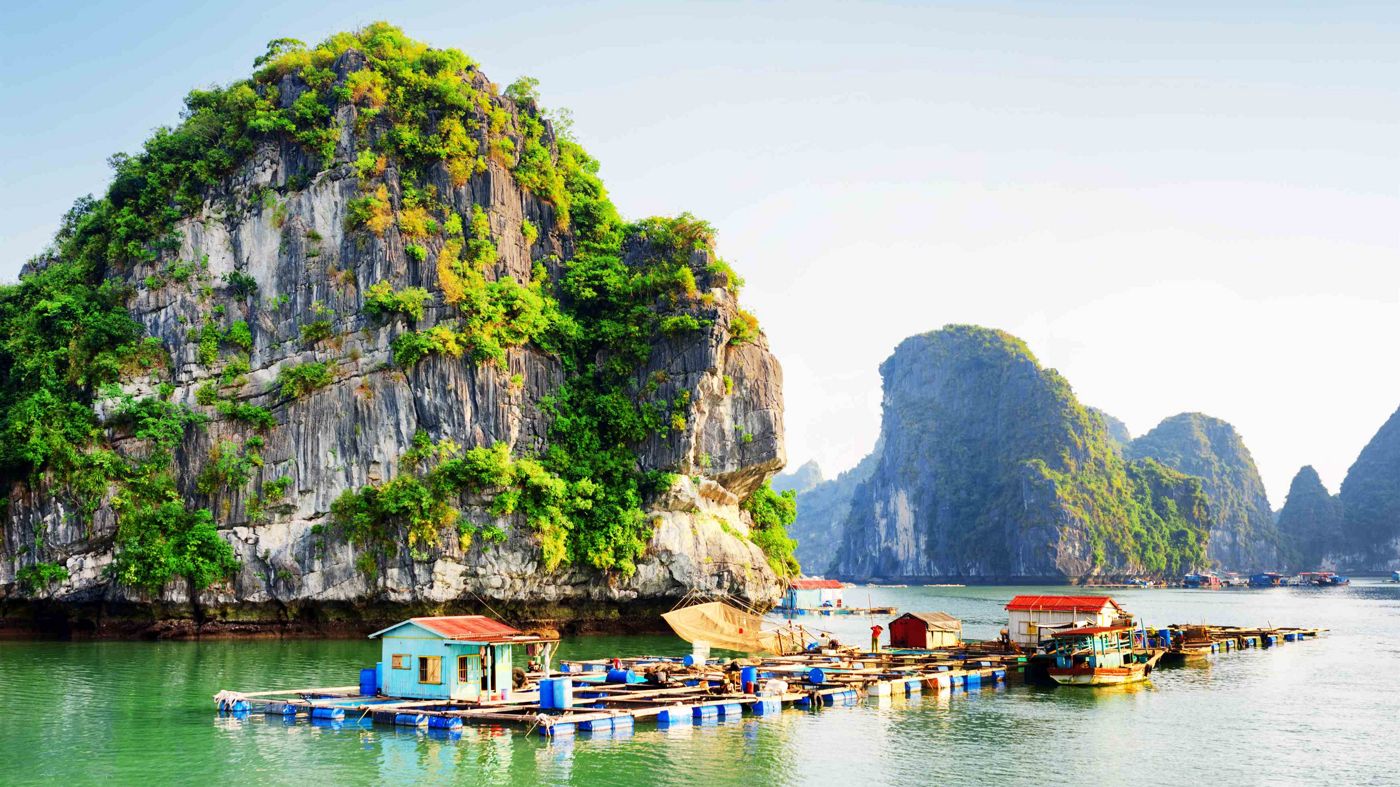
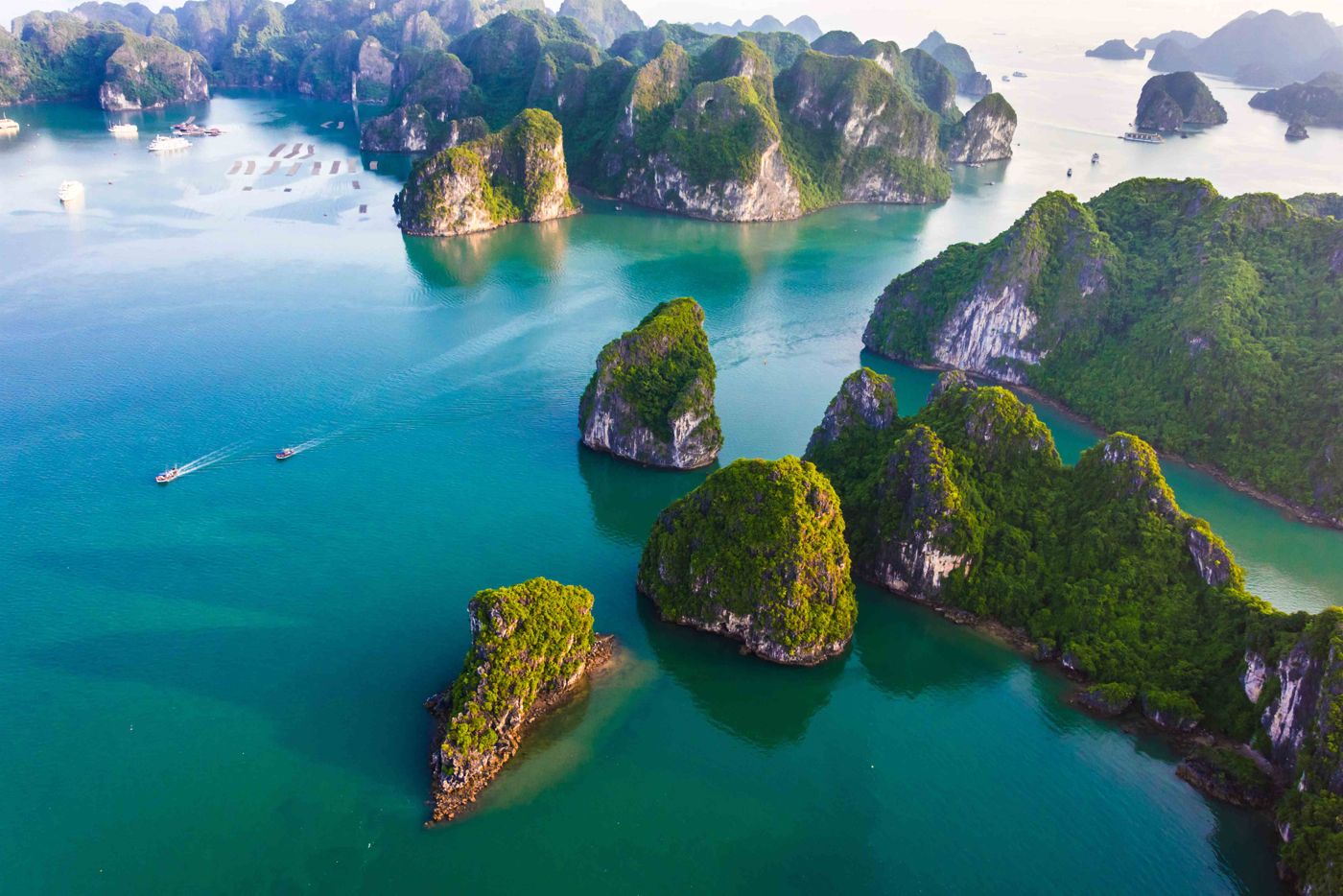
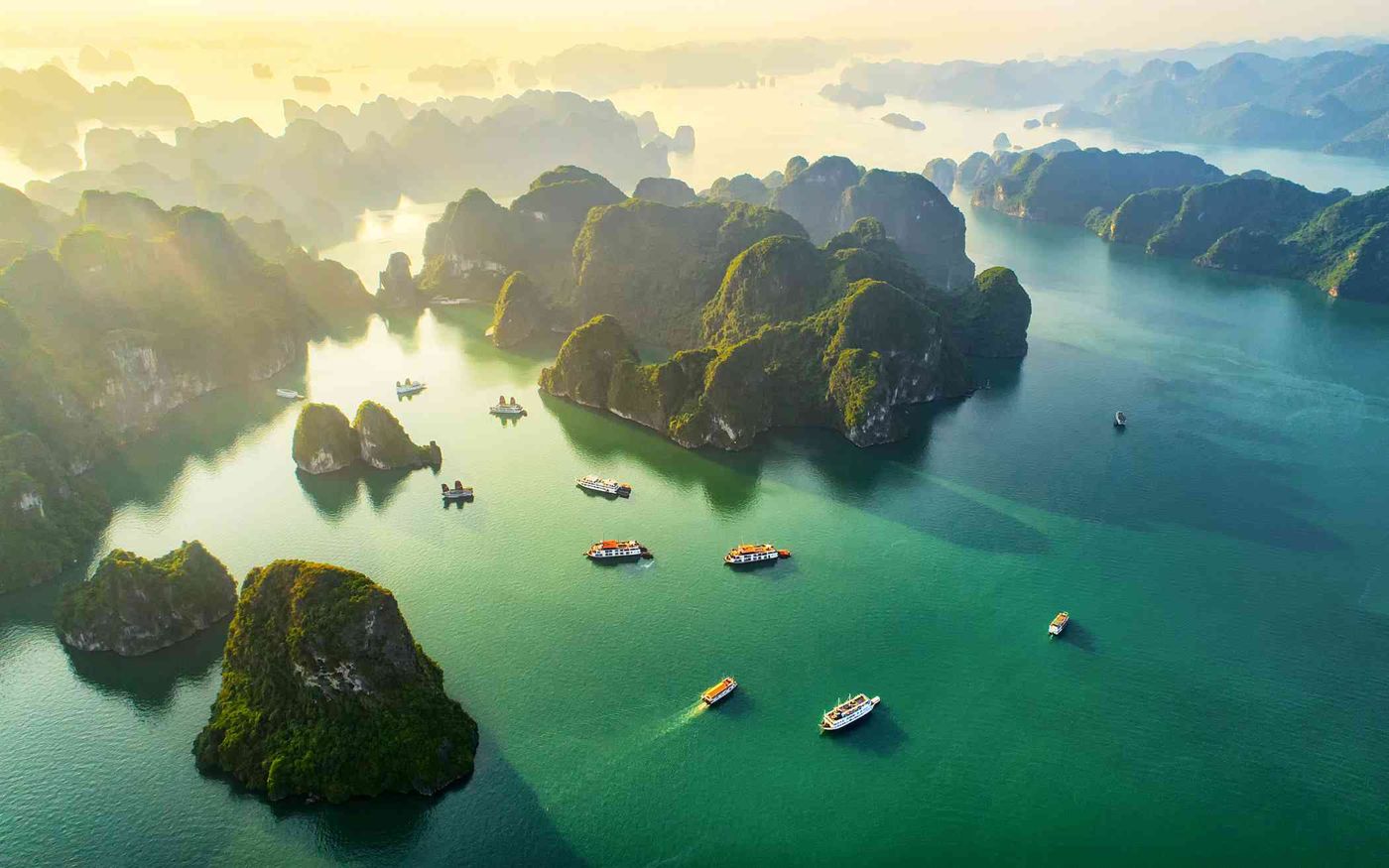
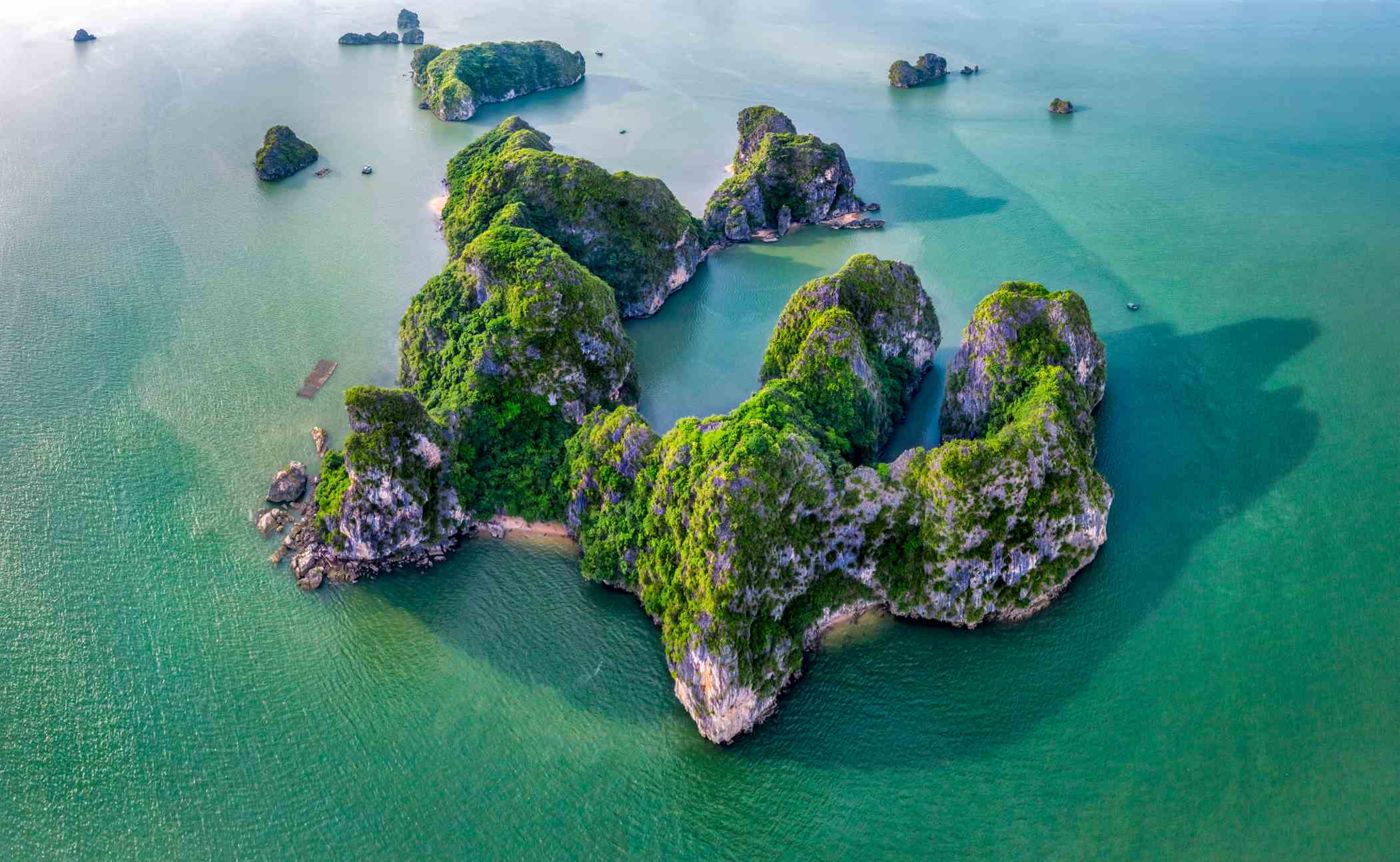
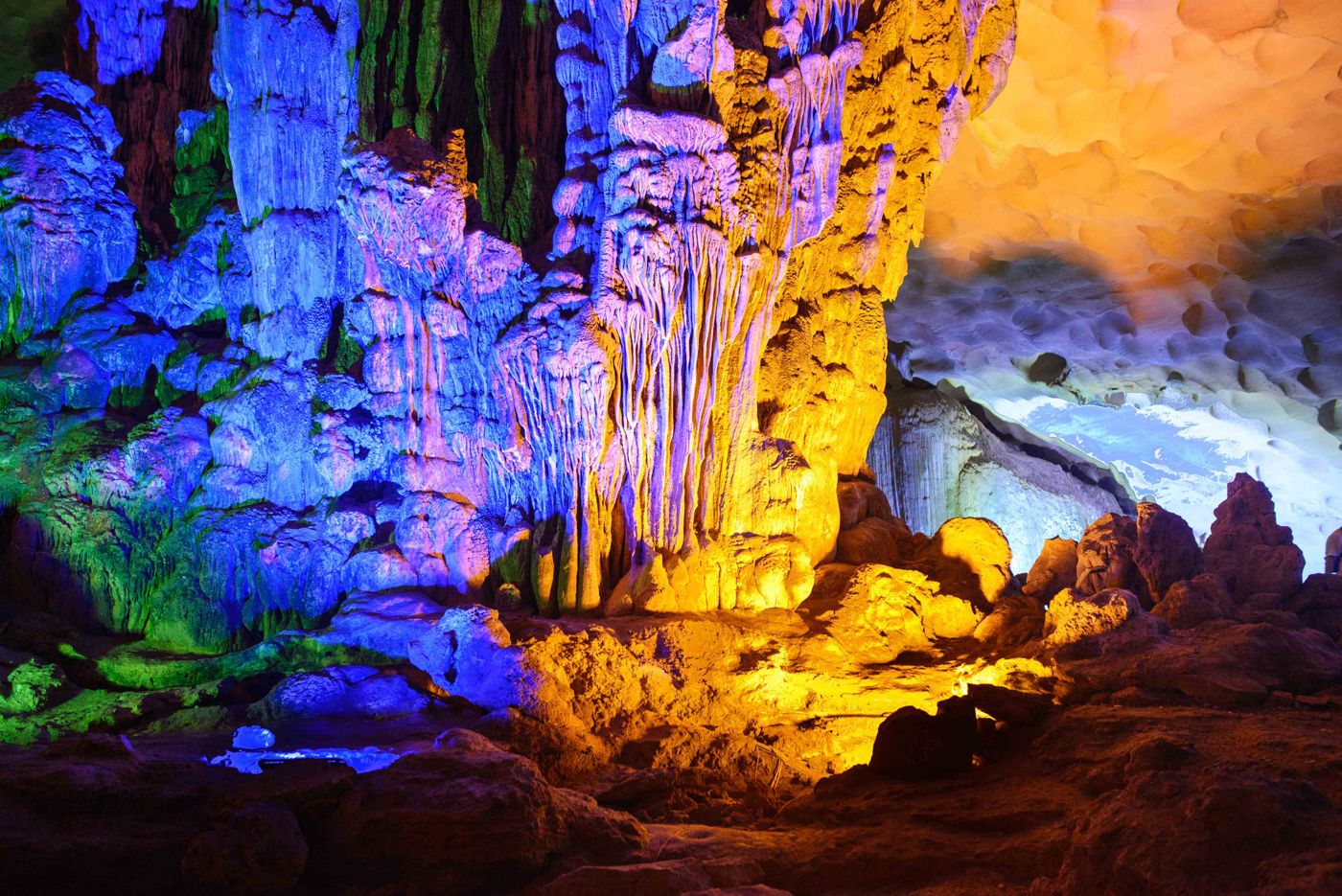
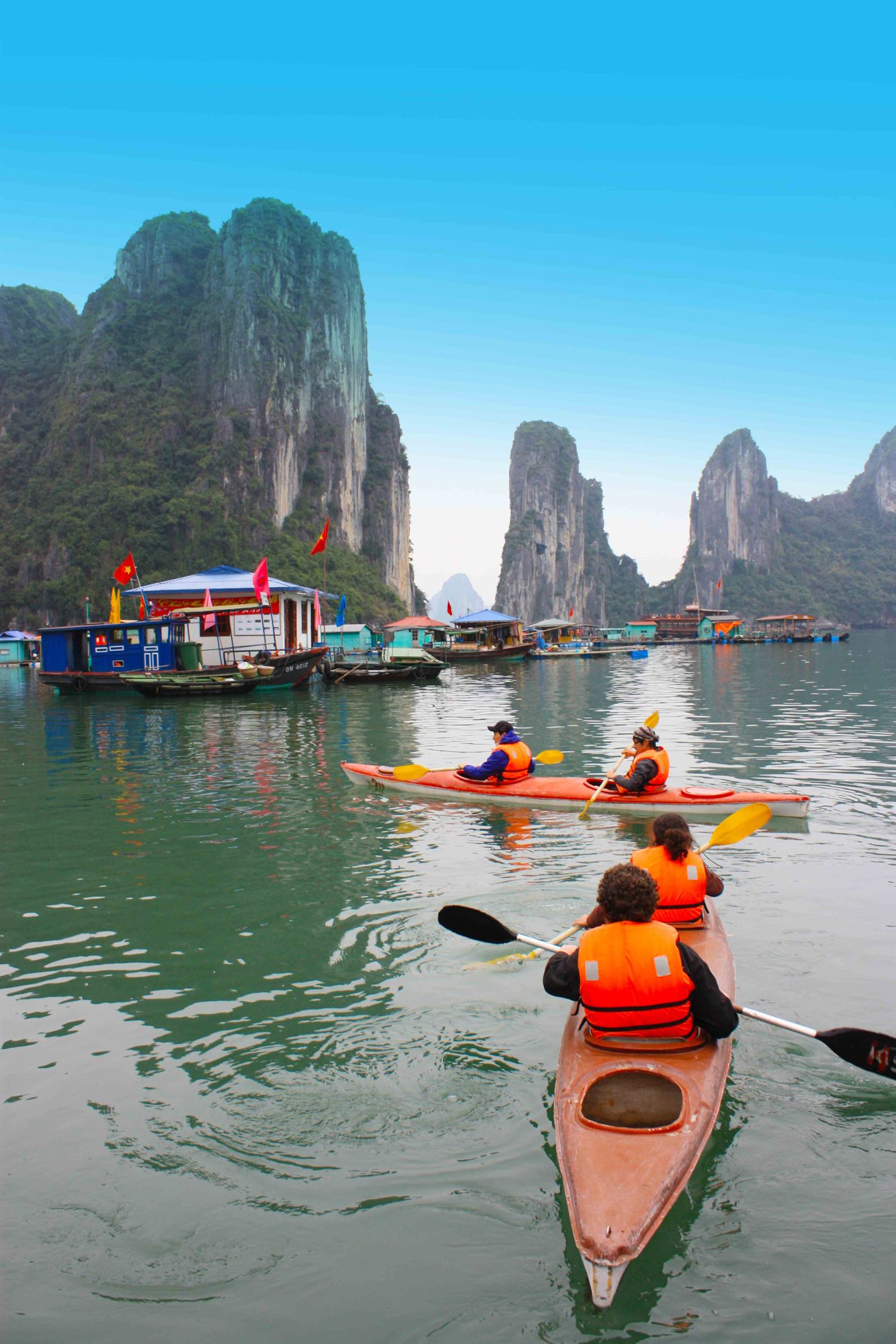
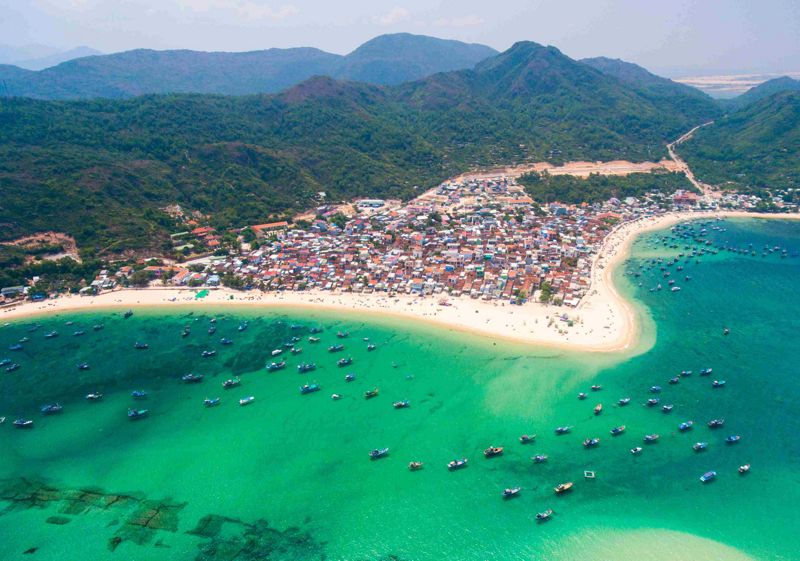
-thumbnail-73938e70f85a66dfbad3e7c4266e9a23.jpg)
